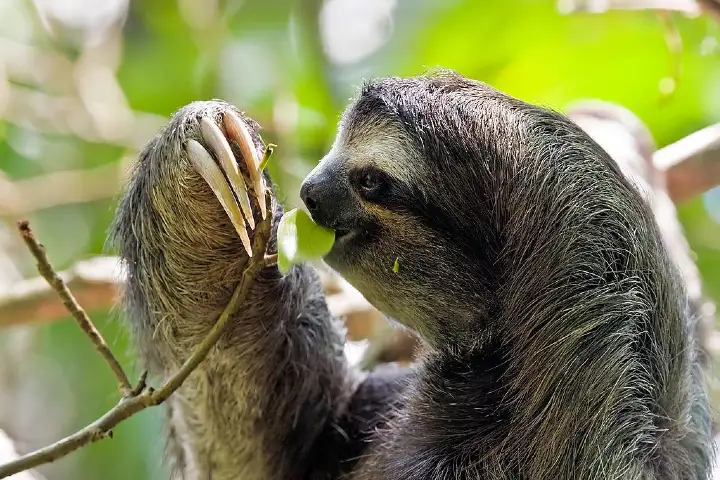Looking at sloths which are arboreal mammals hanging from trees with the help of their fingernails makes one wonder about how strong they must be to do this. Now as per a report in sciencealert.com, even though the creature uses all its four limbs, it is the left side which is astonishingly stronger than the right.
This was found out by Melody Young, an anatomist at New York Institute of Technology along with her colleagues when they studied the brown-throated three-toed sloth.
Details of this study have been published in the Journal of Zoology.
The number of animals which spend almost their complete life on trees are few and among those which survive on leaves is even lesser. While it may seem that their abode provides them enough food, yet it is no easy task to get nutrients from the plant material they eat.
Sloths are notoriously slow. This Brown-throated Three-toed sloth took close to half hour to cross a road& make it to a tree on the other side. Luckily vehicles stopped and let him pass. The yellow patch on its back tells you it is a male.#IndiAves @wti_org_india pic.twitter.com/Tld2AdxjOy
— Vivek Menon (@vivek4wild) November 10, 2022
To get over this issue, many folivore mammals, like moose and giraffes have evolved a big digestive system while many which don’t have the luxury of such an arrangement, squeeze the best from what they eat and do not expend energy by staying up in the trees.
Now the bone-claws of the sloths which are elongated get a firm grip without wasting energy and mass on muscle power. The latest research shows that the strength of the grasp that enables the creature to dangle is extraordinary to say the least.
Explaining to New Scientist, Young informed that two researchers are required to remove a sloth hugging on their third colleague, with each of the two managing just one leg. It has been observed that at times even when they are dead, they are clutching on to the tree.
For their study, Young and colleagues measured the strong grasp of five brown-throated sloths. It was discovered that when compared to their body weight – the average weight being 3.8 kilograms – the strength in their digital flexor muscle was twice that of human beings and other primates.
This ability allows the creature to hold more than 100 per cent of their body weight with merely one foot or hand. What is interesting is that there is a difference between the hind and fore limbs. In the case of primates, it is different as their hind limbs are stronger, taking around 50 to 70 per cent of their weight while climbing. The distribution of weight in sloths is more even.
The highlight of the study was that between their left and right grip strength there is a 16 per cent difference which is prominent in case of the hands. The primates on the other hand are stronger on their right side.
Writing about it the scientists said: “The consistent tendency for left sidedness across the individuals studied was unexpected, and future work should explore the potential ecological and anatomical correlates of such a finding.”
It is fascinating to note that the researchers may have in fact underestimated the strength of the sloth’s grip. Explaining this they said: “Anecdotal reports from members of the conservation team have described B. variegatus to grip onto their substrates so tightly to prevent predators from pulling them away that the skin on their back would sooner be stripped away.”
That is some power considering how slow-moving this mammal is.














